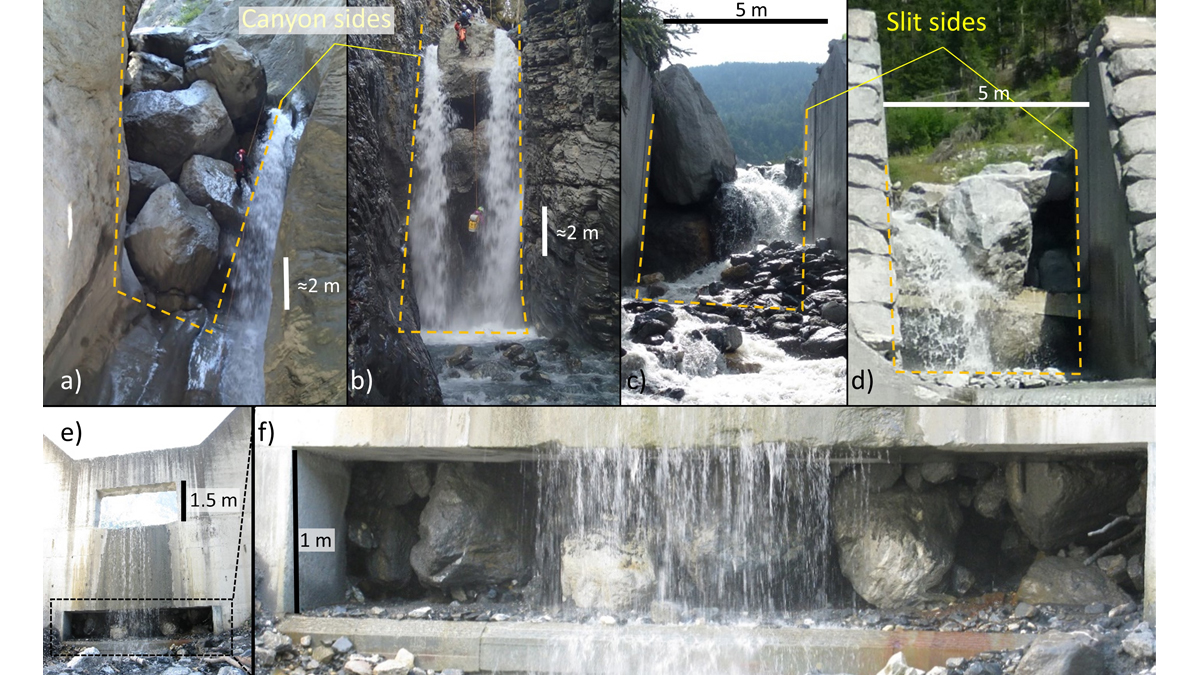Editors’ Highlights are summaries of recent papers by AGU’s journal editors.
Source: Journal of Geophysical Research: Earth Surface
Debris flows are a major hazard in mountainous areas, regularly causing costly damages and loss of life. Management of the risk frequently involves engineering solutions such as slit dams. The optimal design of a slit-dam should allow small flows to pass through (thereby limiting siltation and increasing the dam’s life expectancy) but block large ones; the dam should also be small enough to limit environmental impact and cost. Boulder jamming is an important component of the system (see examples in the photos above).
Numerical models may be used to forecast the likelihood of jams based on interactions between boulders and fluids during a debris flow, but models that have such capabilities tend to be computationally intensive. Moreover, it is very difficult to know how many boulders are in a debris flow and how large they are in the first place, which makes the process highly uncertain.
Piton et al. [2022] propose a new framework to estimate the probability of jamming at constrictions during debris flows. The model combines simple hydraulic equations with empirical estimates by “experts” of boulder numbers and sizes to forecast possible scenarios of boulders arriving at and interacting with constrictions, using a novel possibilistic statistical method.
The model is fast, allowing running of a multitude of simulations and statistical analysis of the output. The model can be used to test different slit-dam designs and determine which ones are optimal based on the size of debris flows a given area is expected to experience. The authors demonstrate the approach on a planned slit-dam in Canada and highlight the potential benefit of possibilistic approaches to solve geosciences problems where model inputs are often imperfectly known.
Citation: Piton, G., Goodwin, S. R., Mark, E., & Strouth, A. (2022). Debris flows, boulders and constrictions: A simple framework for modeling jamming, and its consequences on outflow. Journal of Geophysical Research: Earth Surface, 127, e2021JF006447. https://doi.org/10.1029/2021JF006447
—Mikael Attal, Editor, Journal of Geophysical Research: Earth Surface

